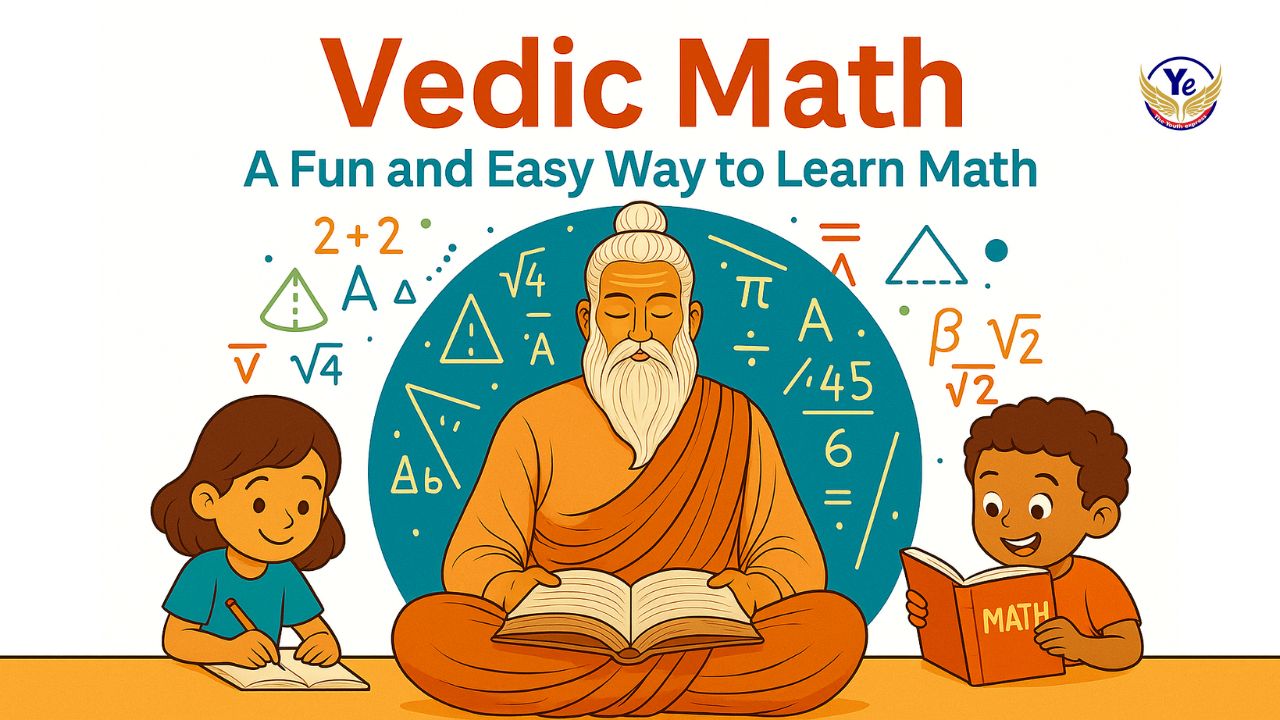
Mathematics has long been a subject that evokes fear in students and admiration in scholars. But what if there were a way to turn complex calculations into quick mental games? Enter Vedic Maths—an ancient system of mathematics that simplifies even the most challenging problems with surprising speed and accuracy.
In this blog, we’ll explore:
- What is Vedic Maths?
- Where does Vedic Maths come from?
- What is the purpose of Vedic Maths?
- How does Vedic Maths work?
- Powerful Vedic Maths tricks for faster calculations
What is Vedic Maths?
Vedic Mathematics is a collection of ancient Indian mathematical techniques that make solving arithmetic problems faster and easier. It’s not just a set of shortcuts; it’s a complete system based on patterns, logic, and mental agility.
The term "Vedic" comes from the Vedas, India’s oldest scriptures, dating back over 5,000 years. These techniques were compiled into a cohesive system in the early 20th century by Swami Bharati Krishna Tirthaji, a scholar and spiritual leader.
At its core, Vedic Maths uses 16 Sutras (formulas) and 13 sub-sutras—each providing a different method for solving mathematical problems mentally, often in just one line.
Where Did Vedic Maths Originate?
While the structured system of Vedic Maths was reintroduced in the early 1900s, its roots go back to the Atharva Veda, one of the four Vedas, where references to mathematical concepts can be found. Swami Tirthaji claimed to have rediscovered these methods between 1911 and 1918 after deep meditation and study of the ancient texts.
He later published his findings in the book Vedic Mathematics, which brought the system to the world stage.
What is the Purpose of Vedic Maths?
The main goal of Vedic Maths is to simplify arithmetic and algebraic operations so they can be done mentally and quickly. But it goes beyond speed. Here’s what it aims to achieve:
- Boost mental agility and concentration
- Develop problem-solving skills
- Enhance memory and visualization
- Make math less intimidating and more enjoyable
- Improve academic performance and confidence
Today, it’s being adopted in schools and competitive exam training across India and abroad.
How Does Vedic Maths Work?
Vedic Maths is based on simple yet profound principles. It encourages you to:
- Work from left to right (opposite of traditional methods)
- Use complements and number patterns
- Solve in your head, minimizing written work
- Break down problems into smaller, manageable chunks
These principles align perfectly with how our brain processes information, making Vedic Maths especially effective for mental calculation.
Vedic Maths Tricks You Can Start Using Today
Let’s explore some real tricks that show the power of Vedic Maths. These are beginner-friendly and fun to try!
1. Multiplication by 11
Multiply any two-digit number by 11 in seconds.
✅ 43 × 11 = 473
2. Square of a Number Ending in 5
Example:
Find 75²
Step 1: Multiply the first digit (7) by its next number (8) → 7 × 8 = 56
Step 2: Add 25 at the end → 5625
✅ 75² = 5625
3. Subtraction from Powers of 10
Example:
1000 – 648
Subtract each digit from 9, except the last one from 10:
→ (9–6)(9–4)(10–8) = 3 5 2
✅ 1000 – 648 = 352
4. Multiplying Numbers Near Base Values (like 100)
Example:
98 × 97
Step 1: Base = 100, so
98 is -2 from 100
97 is -3 from 100
Step 2: Cross subtract → 98 – 3 = 95 or 97 – 2 = 95
Step 3: Multiply the differences → (–2)×(–3) = 6
Step 4: Combine → 9506
✅ 98 × 97 = 9506
5. Magic Division by 9
To check if a number is divisible by 9, add its digits.
Example:
Is 738 divisible by 9?
7 + 3 + 8 = 18 → 1 + 8 = 9
✅ Yes, it’s divisible by 9.
Why Students and Professionals Love Vedic Maths
- Makes exams like GRE, GMAT, CAT, and banking tests easier to crack
- Saves time in competitive exams
- Sharpens brain for puzzles, analytics, and mental math
- Encourages alternative thinking and creativity
Can Anyone Learn Vedic Maths?
Absolutely. Vedic Maths is suitable for:
- School students (from Grade 3 onwards)
- Parents looking to help their children with math
- Competitive exam aspirants
- Professionals in finance, accounting, and analytics
You don’t need to be a math genius—just curious and consistent.
Vedic Maths is not just a trick-based system—it’s a philosophy of approaching numbers with clarity, creativity, and calm. As modern education races to keep up with AI and automation, learning this age-old system that sharpens the human brain is more relevant than ever.
So the next time math feels tough, take a deep breath and think the Vedic way. You might just surprise yourself.






